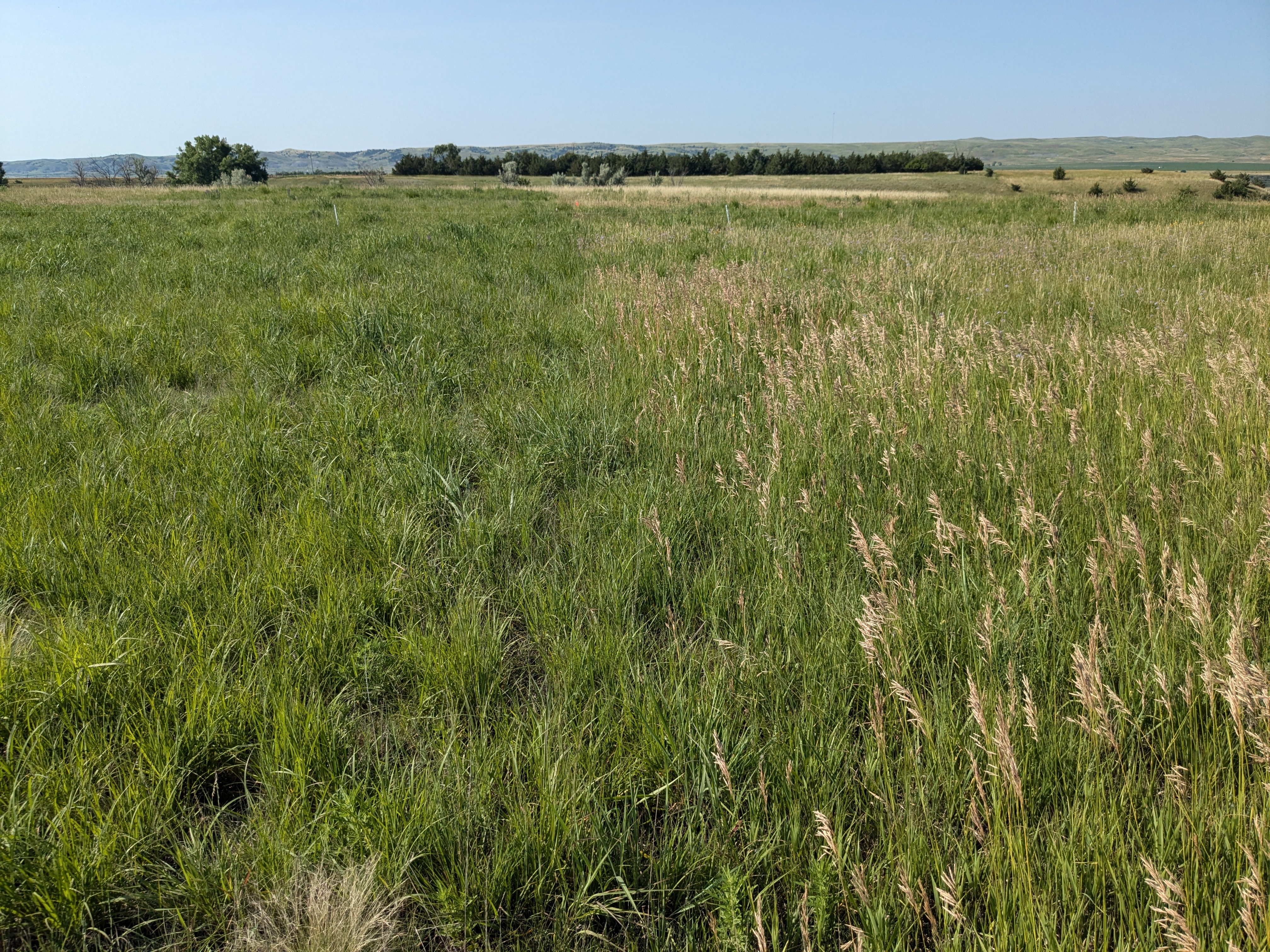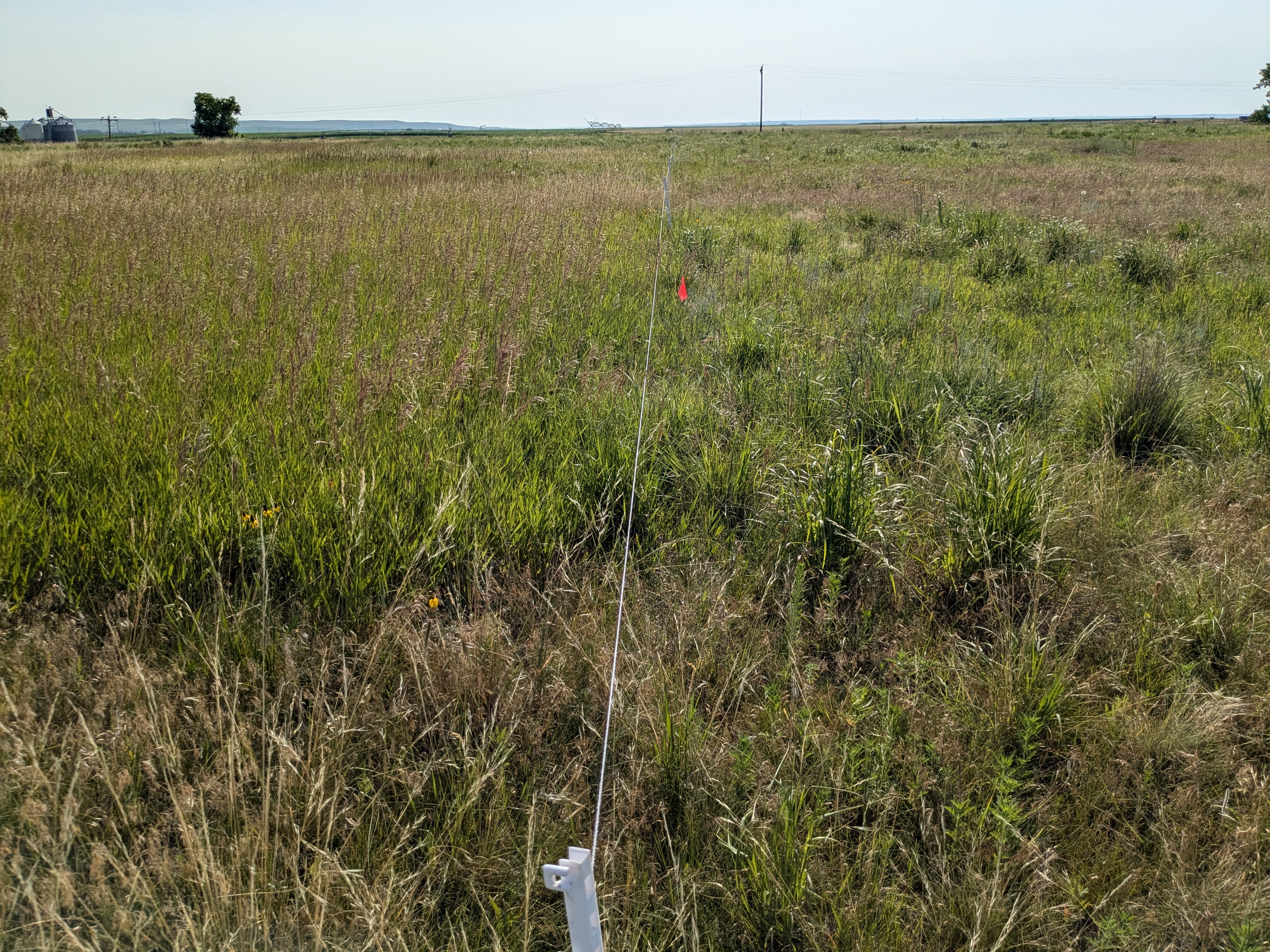Shields Pasture Renovation Update, July 9, 2024
Wednesday, July 31, 2024
Dakota Lakes Research Farm’s work to renovate the Shields Pasture in Pierre, SD, continues, and experiments with seeding, herbicides, and targeted grazing are showing informative results.
As explained by Dr. Cody Zilverberg in this video, the project includes areas where glyphosate was used to terminate previous growth in the pasture as well as areas where no herbicide was used. In both cases, the fields also were either seeded with a native grass seed mix or were not. In addition, some of the areas that had seed applied were grazed early in the season to target the exotic cool-season grasses to try to reduce the amount of undesirable grasses that go to seed, as shown in this video.
Seed vs. no Seed

The first part of the experiment was to see what it would take to get native grasses reestablished.
In the background of the photo above, you can see big bluestem and a few other native grasses that were seeded in 2017 and again in 2019. In the foreground, no additional seed was applied, so the seeds that were already in the seedbank, including invasives such as smooth bromegrass, cheatgrass, and crested wheatgrass, were allowed to flourish.
Herbicide vs. no herbicide

Another key to getting natives established was to use glyphosate to kill off unwanted species. Shown here, these fields were sprayed with glyphosate in spring of 2024 to try to eliminate undesirable cool-season exotic grasses. The field on the right wasn’t sprayed, so the invasive grasses still dominate, while on the left the warm-season native species can thrive because the exotics were taken out early in the season.
Early grazing vs. no early grazing

In 2022, Zilverberg added grazing as a component of controlling which species thrive in the pasture. As you can see, the pasture on the left has not yet been grazed in 2024, so there is an abundance of seed heads on the cool season exotics that dominate the field. The pasture on the right was grazed hard this spring, which set the cool-season exotics back and allowed the warm-season natives to get a foothold and flourish.
The reason for wanting to reestablish big bluestem and other natives is clear in this video. Heifers turned out onto the lush, growing native grasses are getting a much better meal in the later part of the summer than they would be on the invasive species that already went to seed and have lost much of their nutritional value.
Categories: News